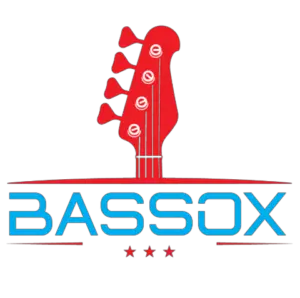As a jazz bassist, you have a lot of room to add style and character to your bass lines.
In order to do so effectively, it’s helpful to know some of the most common scales that bass players tend to use in the genre. Furthermore, it goes a long way to know why they use them, and why these scales are commonplace.
Thus, I`ve made this list of the 5 most essential jazz bass scales. I`ve also left out the major and minor scales so that we can jump right into the good stuff.
After reading you will know what scales can be applied to min7, maj7, and dominant 7 chords in any situation.
Lastly, I`ve also thrown in some additional scales at the end. When you get a good grasp of the first 5, you`ll thus have some further options to try out to really elevate your skills as a jazz bassist.
Dorian Mode
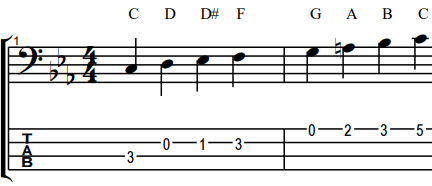

Dorian mode is similar to the minor scale, but it has a raised 6th step.
The reason Dorian mode lends itself well to jazz is that it can be played under Minor Seventh Chords. As long as the Min7 chord does not have an added 13th, dorian will sound harmonic and add character to the chord.
It retains many of the characteristics of the minor scale, but the raised 6th gives the mode some emotional ambiguity. This ambiguity results in the mode having a hopeful character, and can thus be fitting for songs that are not neither fully happy or fully sad.
Notably, the Dorian mode is used by Paul Chambers` on the bass line of Miles Davis` So What. This being just one of several legendary jazz bass lines that are written by him.
On So What, the main theme of the song switches between D and Eb Dorian. Thus, this song is a great example of how dorian can set the mood, and how it can be applied in modal jazz.
Lydian Mode
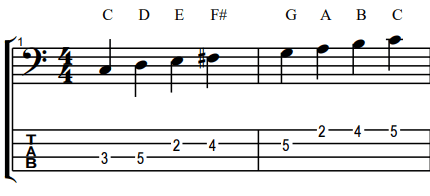

Lydian mode is similar to the major scale, but it has a raised 4th step.
The mode works great for jazz, as it fits well under maj7 chords. As long as there isn`t an 11 in the chord that clahes with the raised 4th step, the mode will sound harmonic and can provide more character to a bass line than the major scale would.
As the perfect 4th is a key step in most scales and modes, the raised 4th step makes this mode distinct and unique. This also gives the mode a fleeting, mysterious, wondering and curious character.
For an example of how the Lydian mode can be used in Jazz listen to Miroslav Vitous` bass line on Chick Corea`s Windows. While the song is progressive in nature, the fleeting character that is retained throughout it, can be attributed to its use of the Lydian mode.
Lydian Dominant Mode
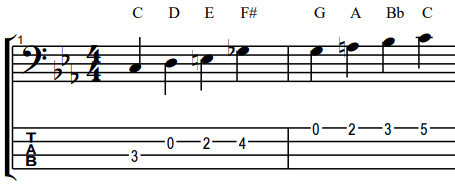

Lydian Dominant Mode, is similar to the lydian mode but it also has a lowered 7th step.
As a result, the mode works great under dominant seven chords. The raised 4th step makes this scale particuarly fitting if the chord also has a #11 or b5 in it. Thus, lydian dominant mode work particuarly well under dominant chord substitutions.
The mode is more resemblant of the major scale than the minor scale. At the same time the raised 4th step and lowered 7th step gives makes it sounding anything but major. The result is a mode that sounds unique, sophisticated, and most importantly, very jazzy.
As Lydian Dominant mode is best used in spesific situations, it`s generally only used intermtiently in most songs. For an example of this, listen to Regina Spektor`s Pavlov`s Daughter, beggining at 2:45.
Mixolydian Mode
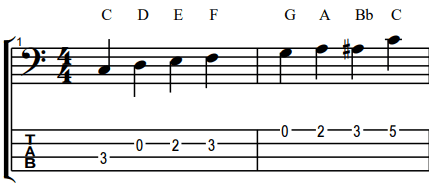

The Mixolydian mode is similar to the major scale. The only difference is that this mode has a diminished 7th step.
Since the leading tone of the major scale is omitted, Mixolydian does not sound as unresolved as the major scale. Instead, the diminished 7th step gives the mode a bluesy and floaty character.
The reason the mode lends itself well to jazz is that it works naturally under dominant seventh chords. As opposed to Lydian dominant mode, mixolydian mode works particularly well over V7 chords.
An example of the Mixolydian mode being used to great effect is Miles Davis` All Blues.
The intro and much of the song consist of an I-VII-I-VII chord progression. While this would create a lot of tension in a major key, the diminished 7th step of the Mixolydian scale instead makes the chord changes sound smooth and floaty.
The Chromatic Scale


The chromatic scale differs quite a bit from most other scales. This is because while most scales tend to use 7 or fewer diatonic notes, the chromatic scale uses all 12 notes available.
In other words, every note is part of the chromatic scale.
The chromatic scale is a common metal bass scale. Here, the dissonance of the scale is often used frequently to achieve a specific type of sound. This is different from jazz, where chromatic notes are generally used to create intermittent tension and connect chords.
For example, let`s take a look at a basic C major ii-V-I chord progression. In the bass line below we find both an A# and a C#, neither which are part of the C major scale. Still, these chromatic notes work well and add a natural sense of movement to the bassline.

The reason we don`t perceive these notes as particularly dissonant, is that they are used to lead into chords. Furthermore, they are oftentimes played fast so we don`t get time to dwell on their dissonance.
In this example, the bass line ascends to the G7 and Dmin7 chords chromatically. Chromatic successions of notes sound natural on their own, so despite breaking with the percieved C major scale the chromatic scale works in this situation.
Additional Scales
The above 5 jazz bass scales will get you off to a good start. This is because they`ll prepare you for the main types of chords you will find in jazz, and you will run into lots of situations where all of them can be applied.
With that said, there are many other scales that you can make use of as a jazz bassist in more niche situations. Thus, after mastering the above scales, here are 4 more for you to try out:
- Dominant diminished scale: Altering half and whole steps. The scale can be played under Dominant 13b9 chords.
- Phrygian mode: Minor scale with a diminished second step. Can be used under iii chords.
- Locrian mode: Minor scale with a diminshed second and diminished fifth step. This mode will fit well under min7b5 chords.
- Whole-Tone scale: 6-tone scale consisting solely of whole steps. Can be used under Dominant 7b13 chords.
Some of these can be more tricky to incorporate into your bass lines than the first 5 I mentioned. They do however show that there is always a scale or mode that fits under any chord out there.
As you become more proficent at the bass, knowing these scales will serve to make your bass playing stand out. The best part is that they ensure that your bass lines sound like jazz, while still giving you room to be creative and express yourself through your instrument.
